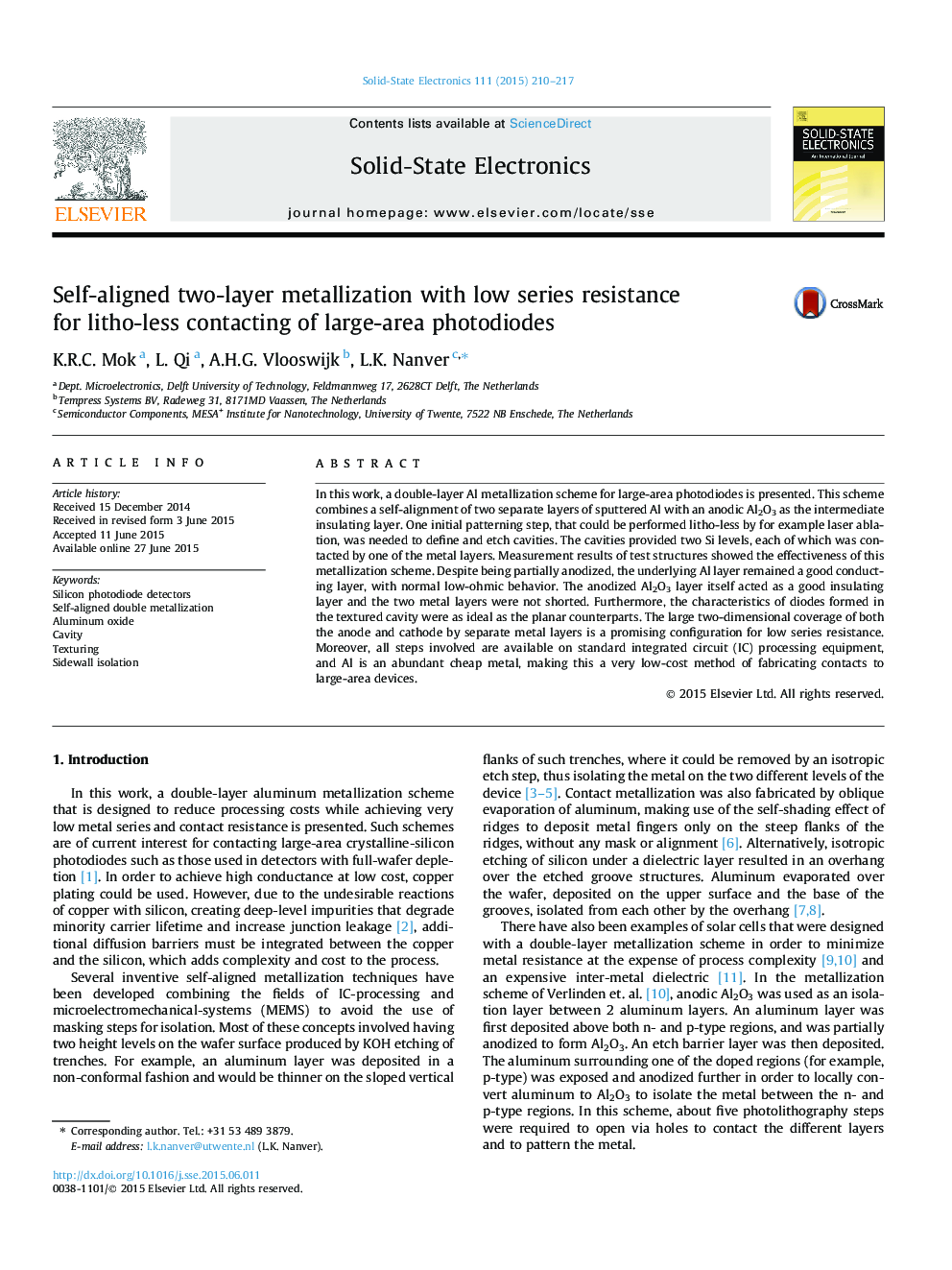| Article ID | Journal | Published Year | Pages | File Type |
|---|---|---|---|---|
| 7151045 | Solid-State Electronics | 2015 | 8 Pages |
Abstract
In this work, a double-layer Al metallization scheme for large-area photodiodes is presented. This scheme combines a self-alignment of two separate layers of sputtered Al with an anodic Al2O3 as the intermediate insulating layer. One initial patterning step, that could be performed litho-less by for example laser ablation, was needed to define and etch cavities. The cavities provided two Si levels, each of which was contacted by one of the metal layers. Measurement results of test structures showed the effectiveness of this metallization scheme. Despite being partially anodized, the underlying Al layer remained a good conducting layer, with normal low-ohmic behavior. The anodized Al2O3 layer itself acted as a good insulating layer and the two metal layers were not shorted. Furthermore, the characteristics of diodes formed in the textured cavity were as ideal as the planar counterparts. The large two-dimensional coverage of both the anode and cathode by separate metal layers is a promising configuration for low series resistance. Moreover, all steps involved are available on standard integrated circuit (IC) processing equipment, and Al is an abundant cheap metal, making this a very low-cost method of fabricating contacts to large-area devices.
Keywords
Related Topics
Physical Sciences and Engineering
Engineering
Electrical and Electronic Engineering
Authors
K.R.C. Mok, L. Qi, A.H.G. Vlooswijk, L.K. Nanver,
